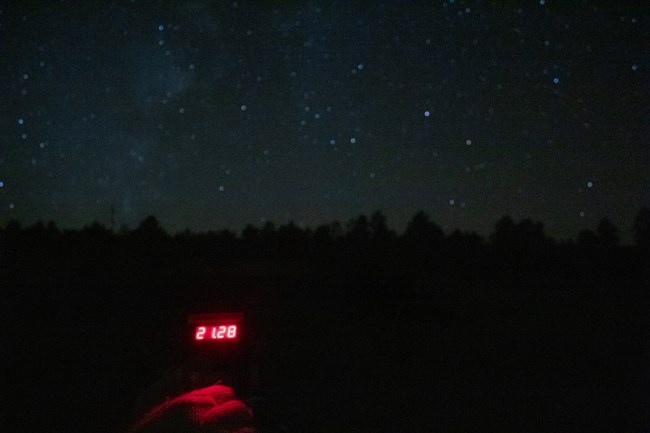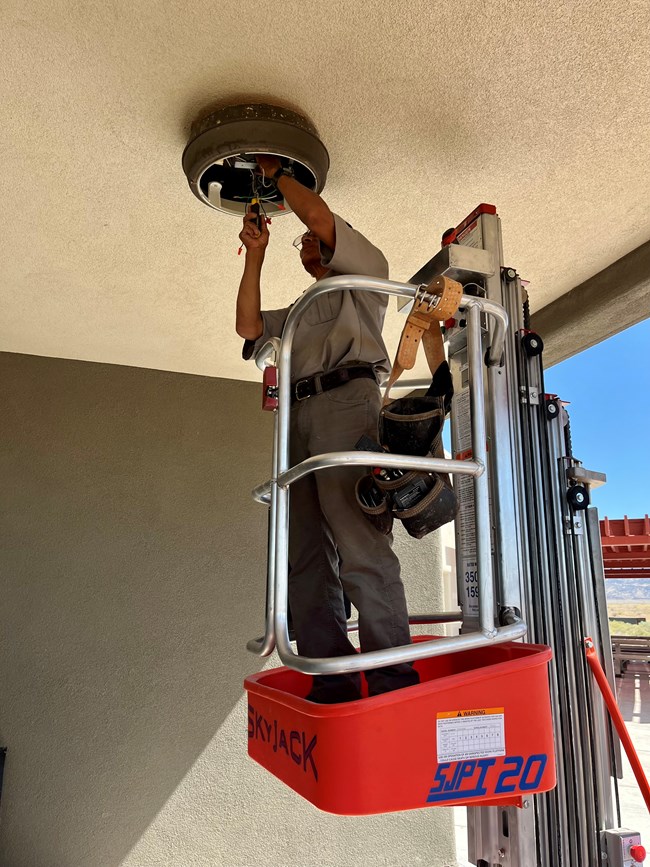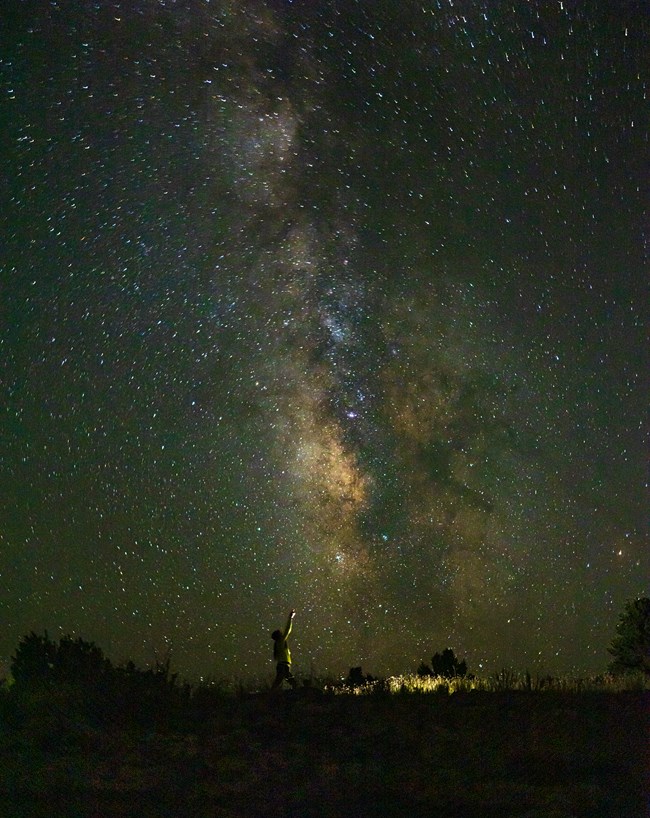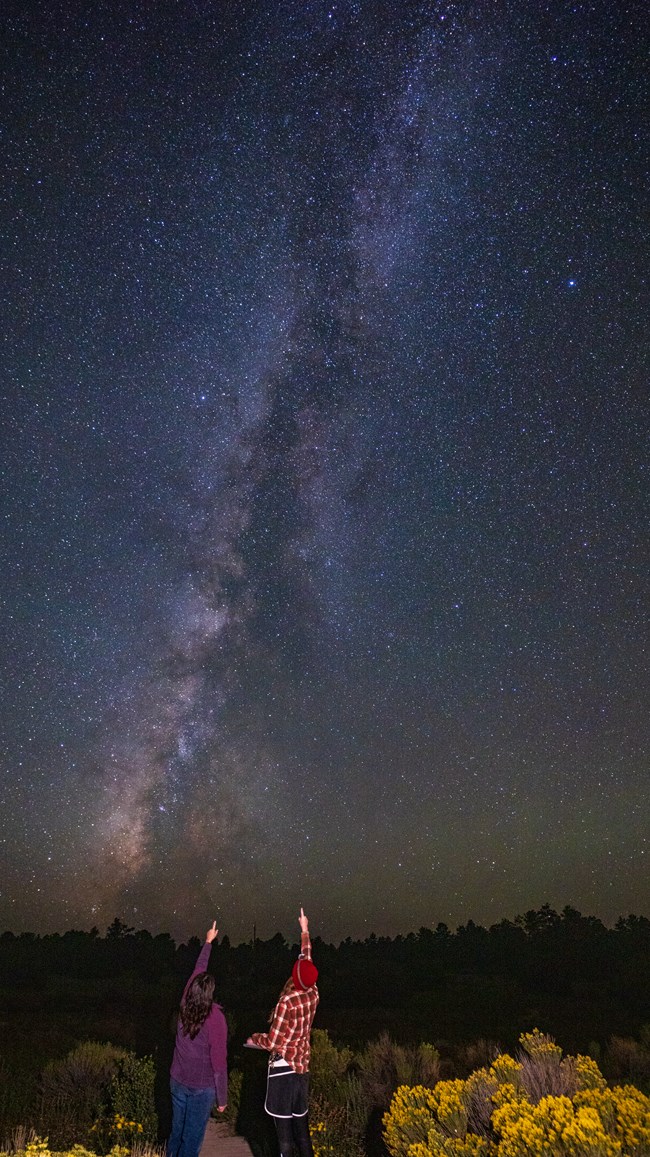
A Future Dark Sky ParkEl Malpais is currently in the process of applying to become an International Dark Sky Park. This certification through the International Dark Sky Association (IDA) will formalize the park's commitment to preserving the night sky as a resource and encourage neighboring communities to help the park protect the night. 
NPS Photo The park also has to set an example as a night sky protector and engage the local community to educate people about the importance of night skies. El Malpais staff assessed the lighting on buildings around El Malpais to determine whether the lights were night sky friendly. To do this assessment, park staff used the following best practices to determine whether the light needed replaced:
Several lights across the park were determined to not meet all of the above best practices, and park maintenance staff is currently working to replace these lights with lights that meet all of the best practices. Protect The NightEl Malpais National Monument has spectacular dark skies. What do your skies look like at your home? If your night sky isn't as dark as you would like, you can help improve night sky quality by taking steps around your home and in your local community.

NPS/Rugg Where to Look UpThe International Dark Sky Association requires areas have a visual-band zenith luminance of 21.2 magnitudes per square arcsecond (0.4 mcd/m2) or darker for official certification. Many places in and around El Malpais already exceed this requirement, and you can visit them any time of year! There’s no need to wait for a certification to explore the night skies. El CalderonHow to get there: Take exit 81 off of Interstate 40 for New Mexico Highway 53. Drive approximately 20 miles before turning left onto the trailhead. La Ventana Natural Arch (BLM)How to get there: Take exit 89 off of Interstate 40 for New Mexico Highway 117. Drive 18 miles south. The turn-off is on your left. The Narrows Trailhead (BLM)How to get there: Take exit 89 off of Interstate 40 for New Mexico Highway 117. Drive 20 miles south. The turn-off is on your left. Lava FallsHow to get there: Take exit 89 off of Interstate 40 for New Mexico Highway 117. Drive 36 miles south. The turn-off is on your right. A one-mile gravel road ends at the parking lot. 
NPS Photo Stargazing TipsThere's plenty to see with your naked eye, but binoculars or telescopes offer a deeper look into space. Bring a chair if you plan on spending a few hours outside, sky maps to better undersand what you're looking at, and pack extra layers, especially furing the winter. Local sunset and sunrise times change with the seasons, and weather can vary, so remember to plan ahead if you're looking to get a late or early start. Year-Round Visible Features
Summer Sky Features
Winter Sky Features
|
Last updated: May 6, 2025
